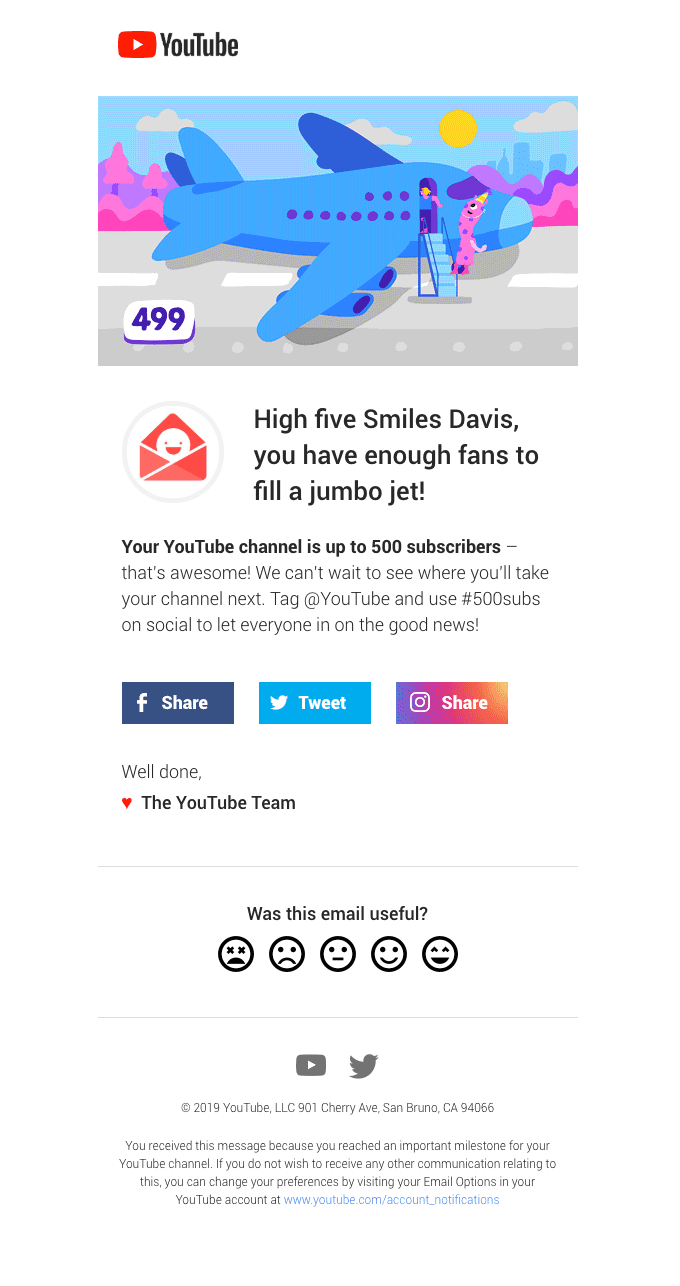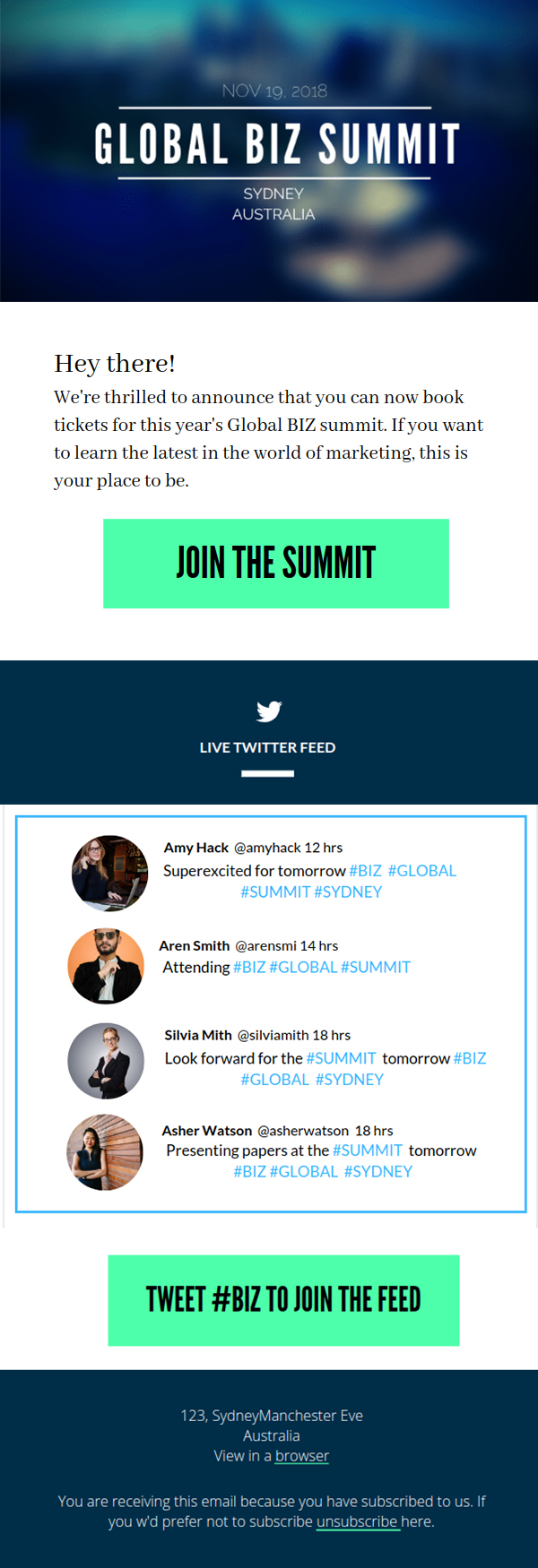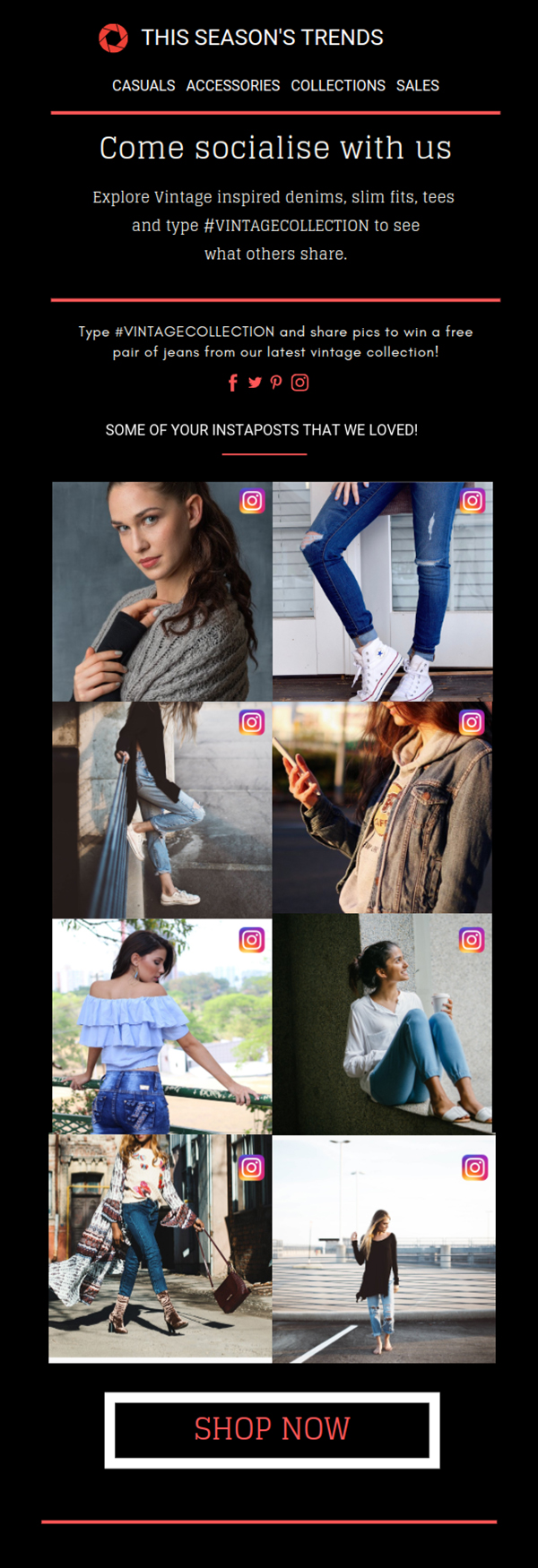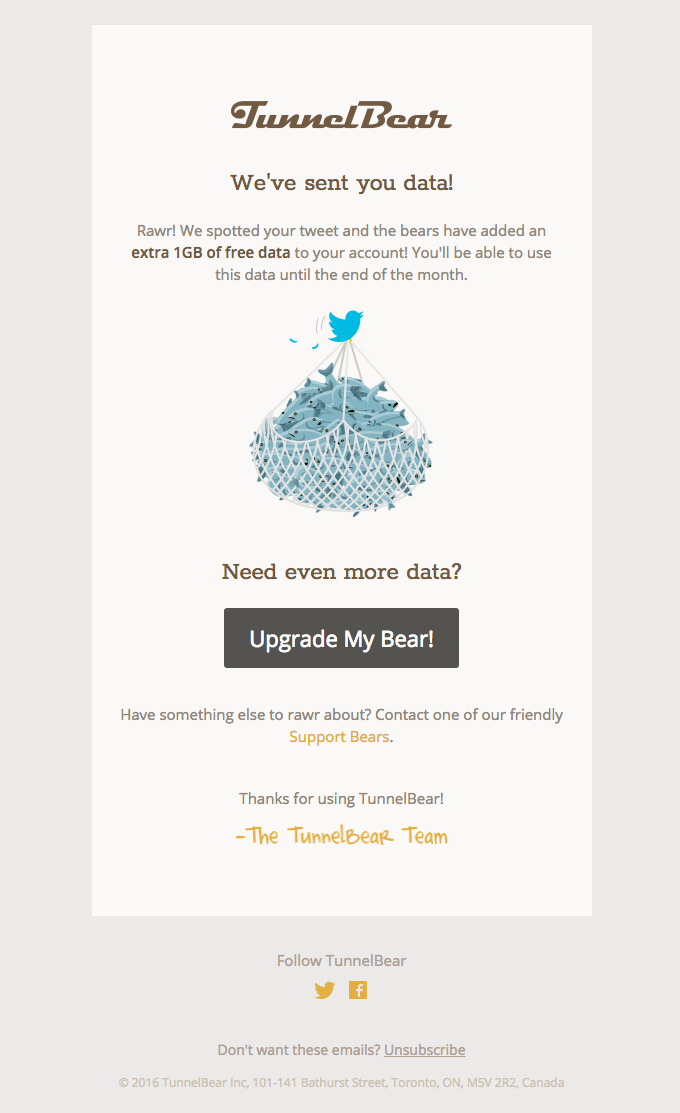Whether it’s a short sales cycle (that a typical B2C business like online stores has) or a long one (that are common to B2B businesses), most purchases happen with the help of multiple channels.
For example, if you’re a clothing store, someone might discover you on Instagram and sign up for your list, and finally make a purchase when you send them a welcome coupon. Or someone from your email list might click on your Google Hangouts Webinar link and join you on your social channel and then end up signing up for a demo.
Learning how to intertwine your channels for more sales is the key to winning more business in such multi-channel sales journeys. This is especially true for your email and social media channels as they’re both not just immensely popular with leads but are also known to be the best channels for lead generation.
So how do you get your social media and email channels to work together so you can get more exposure and leads for your business?
Let’s see a few easy ways…
Encouraging social sharing of the email
Another way to engage your email subscribers on the social channel is to prompt them to share the email itself on their social media profiles.
Here’s an example that does this really well. Below you can see the email that Youtube sends to its channel owners who reach the 500-subscriber milestone.
As you can see, the whole focus of the email is to get the subscriber to share it on their social media profiles. All you have are three big, bold buttons that allow one-click sharing on Facebook, Twitter, and Instagram.

In making it easy for the subscriber to promote their channel across other social media networks, this email manages to get some great exposure for the video publishing platform as well.
Showing social engagement and live feeds in emails
Another way to encourage your email subscribers to engage with you on social media is to feature your social channels’ engagement in your emails. This acts as some excellent social proof and prompts your subscribers to hang out on your social channels.
The following example shows a B2B brand featuring some of the latest tweets with its campaign’s hashtag announcing its conference. As you can see, the email shows multiple Twitter-focused CTAs that encourage subscribers to share the announcement on Twitter and also follow its updates by tweeting out the conference’s hashtag.

Here’s another beautiful example from Urban Outfitters. This B2C brand routinely sends its subscribers emails that include some of its most liked outfits on Instagram. This is a great way for the brand to not just promote its most popular products but also drive sales.

Incentivizing to boost social engagement
Sometimes, simply asking your email subscribers to join you on social media and share your email isn’t enough. You need to incentivize the process and make it more appealing.
Such campaigns are very focused and make a direct, clear ask. Take for instance the following email. As you can see, it uses a very visual approach with lots of product images and a clear caption: “Come socialize with us.” To incentivize the process, it offers a freebie to its lucky users who share their content using its hashtags.

Incentivizing can also help keep the social momentum going. Take this email from Tunnelbear, for instance. As you can see, it adds an extra 1GB data to the accounts of its subscribers who tweet about them.

Uploading lists of your email subscribers to your social networks
Many social platforms make it easy for you to add your email contacts to them.
LinkedIn, for instance, allows you to upload contacts from your email and invite them to follow your page. Even Facebook lets you upload your list of contacts.
Of course, you’d want to make sure that you’ve your users’ consent for such sharing of information among your different channels. But if you can secure it, then these are great ways to build social followings that are already engaged with your brand.
Adding links to your social media profiles in your email
Now, this might seem deceptively simple, but simply adding links to your social media profiles in your emails is a great way to introduce your subscribers to your social media channels.
It gives your subscribers many options to connect with your brand outside of the email channel. This is important because there will always be subscribers having other “more preferred” channels (than emails) for hearing from you. For instance, some of your B2B leads might be interested in listening to your updates on LinkedIn. Giving such people easy ways to join you on LinkedIn won’t just let them connect with you more on a platform of their choice but will also get your more brand more exposure on a relevant social platform.
Likewise, if you run a B2C business such as an online apparel store, you might realize that adding a link to your Instagram feed actually increases your Instagram following and engagement because that platform’s hot with your target demographic.
With an email marketing solution like Juvlon, you can easily add such links to your emails.
Wrapping it up…
The buying journey of most buyers today is a multi-channel one. Which means, you’ll find them clicking on your ad (the PPC channel), looking at your social media feeds (the social media channel), consuming your email content (the email channel), and interacting with your business at many touchpoints before making a purchase. Therefore, by integrating your channels — especially your social media and email channels — you can influence their decision.
Also, because email is one of the highest revenue-generating channels for most businesses and because most of a business’s subscribers are active social media users, these channels together can help you win big business. The key is meaningfully intertwining the two!
So tell us… have you tried using your social media and email marketing channels together? If so, how?

